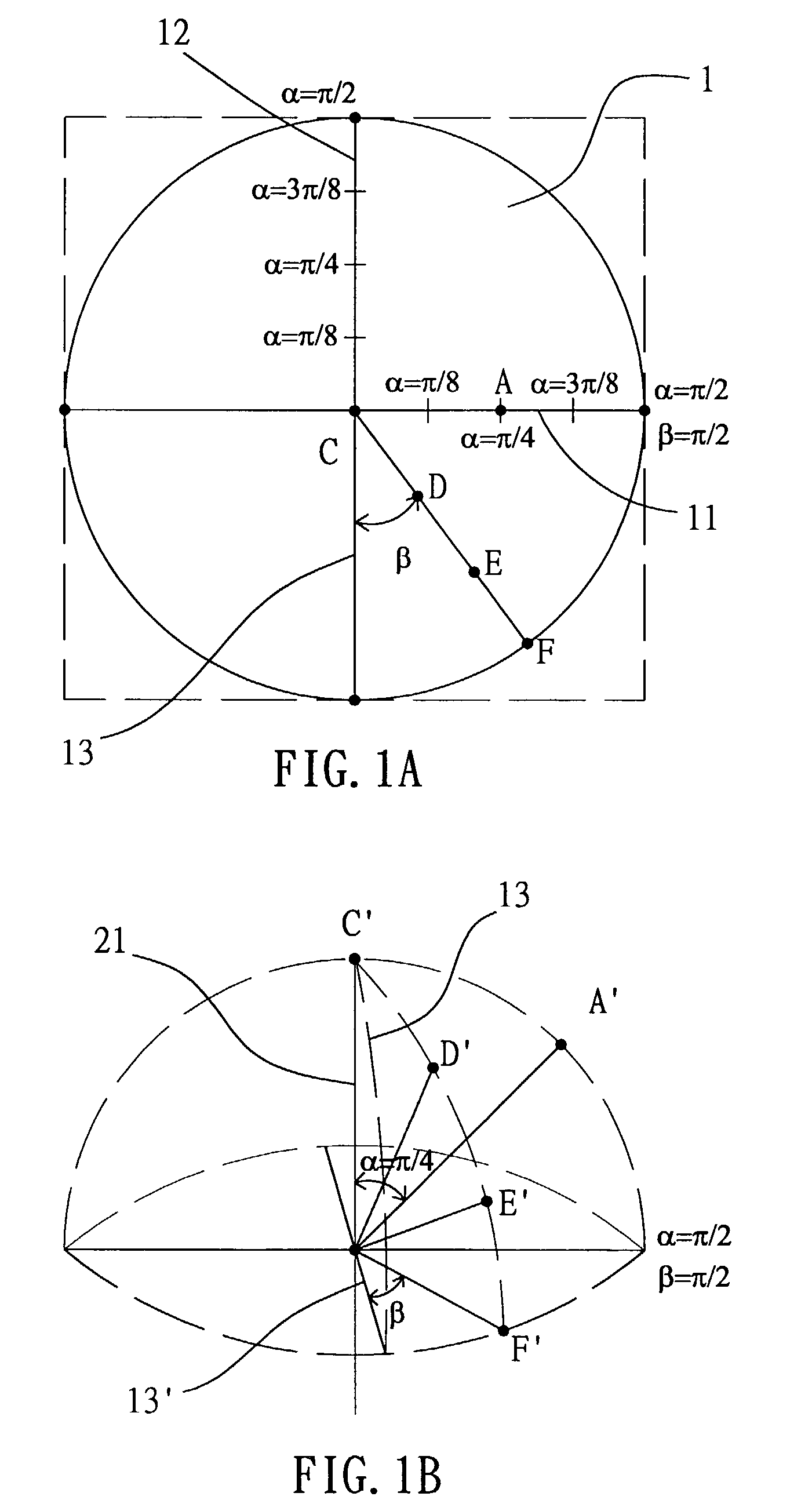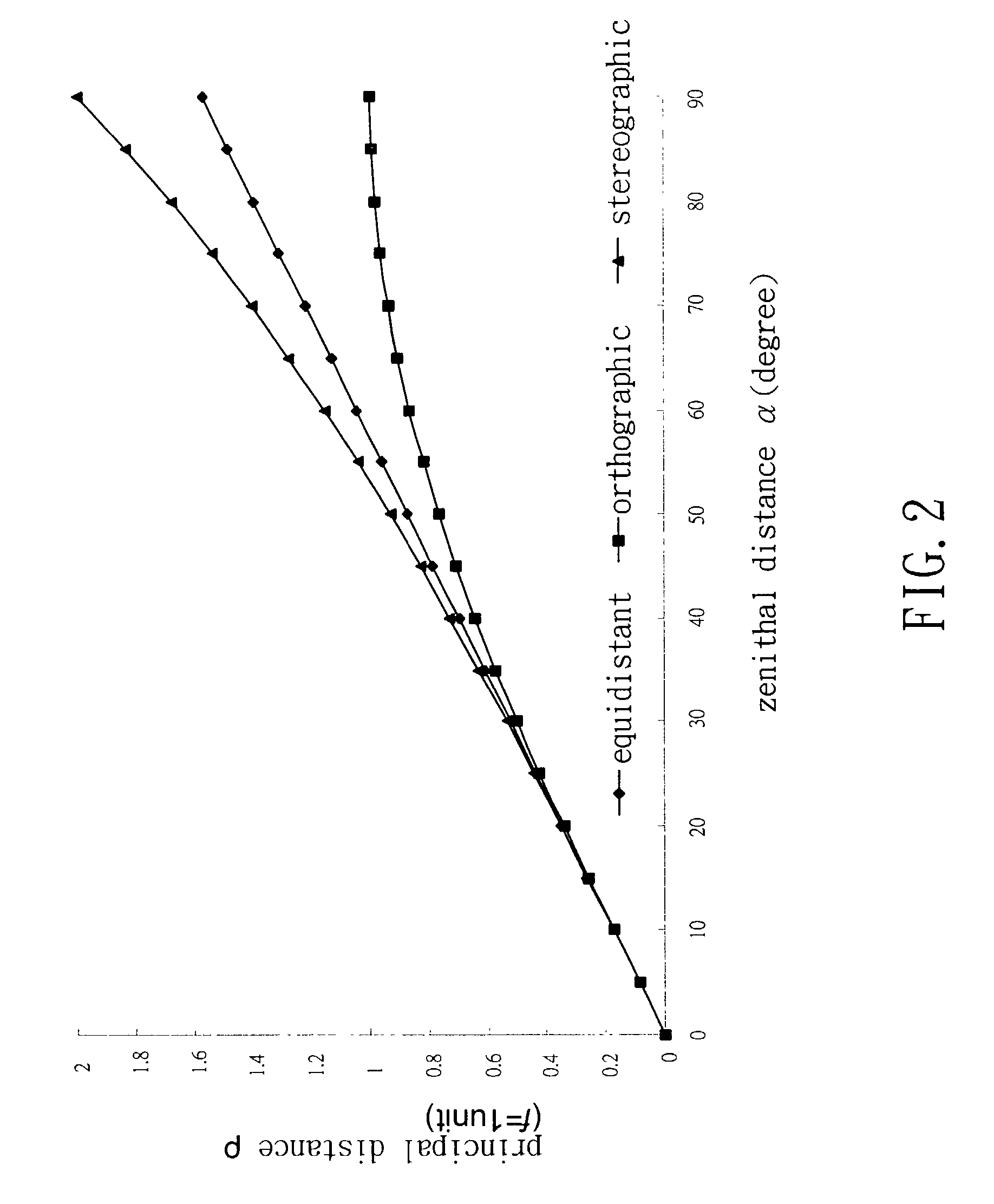Method for presenting fisheye-camera images
- Summary
- Abstract
- Description
- Claims
- Application Information
AI Technical Summary
Benefits of technology
Problems solved by technology
Method used
Image
Examples
Embodiment Construction
[0035]The fisheye-camera image is possessed of a severe barrel deformation comparing with the distortions by a normal camera. The distortion is center-symmetric on the image plane and axis-symmetric in the projecting space. This phenomenon is well known to those skilled in the related art. However, the incident rays from subjects will logically converge onto a unique spatial optical center, and then divergently image on the image plane.
[0036]Considering the geometrical condition, a symmetric image can be obtained by a planar drawing capable of representing a spatial-symmetric geometrical arrangement. Therefore, the optical axis and the principal point are determinable when the symmetric image has been absolutely referred to by means of adjusting the test fisheye camera (also termed as the fisheye image sensor, simplified as the FIS hereinafter). The obtained object-to-image scale data is subsequently based to locate the spatial optical center (also termed viewpoint, simplified as VP...
PUM
 Login to View More
Login to View More Abstract
Description
Claims
Application Information
 Login to View More
Login to View More - R&D
- Intellectual Property
- Life Sciences
- Materials
- Tech Scout
- Unparalleled Data Quality
- Higher Quality Content
- 60% Fewer Hallucinations
Browse by: Latest US Patents, China's latest patents, Technical Efficacy Thesaurus, Application Domain, Technology Topic, Popular Technical Reports.
© 2025 PatSnap. All rights reserved.Legal|Privacy policy|Modern Slavery Act Transparency Statement|Sitemap|About US| Contact US: help@patsnap.com



